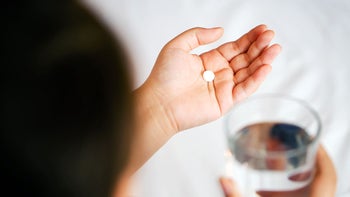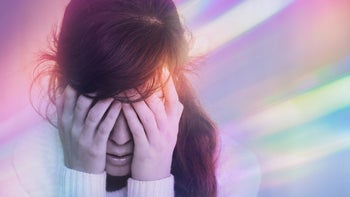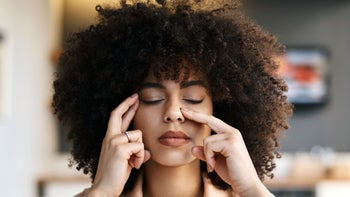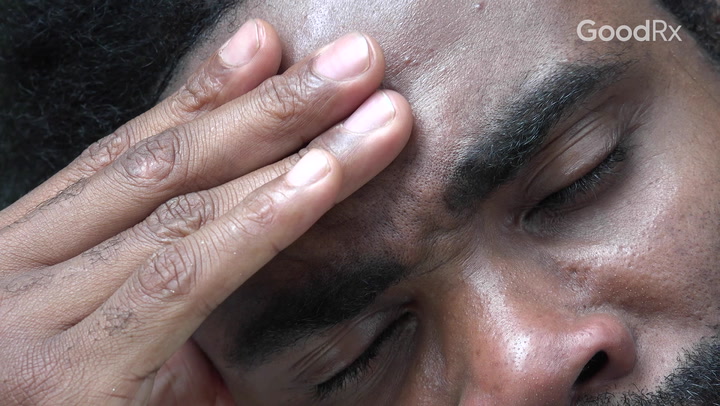
What Are the Best Migraine Treatments and Remedies?
Key takeaways:
Migraine treatments include both short-term (acute) and preventive options. Acute treatments aim to stop headache pain once it starts. Preventive treatments work to keep your headaches from occurring in the first place.
Nonsteroidal anti-inflammatory drugs (NSAIDs), triptans, and other prescription treatments can help lessen headache pain.
Strategies to manage migraine headaches include avoiding migraine triggers, going to therapy, and other natural treatments.
Access savings on related medications
Table of contents
A migraine is a painful type of headache that can happen again and again. Some people experience visual or sensory changes (called a migraine aura), before their pain begins. Migraines can also cause other symptoms like an upset stomach, fatigue, and sensitivity to light or sound.
Migraines can last for several hours or even days. And symptoms can be severe enough that they disrupt daily activities. Fortunately, there are many options to help treat migraines. Let’s take a closer look at the best medications, home remedies, and other treatments that can help your migraine attacks.
What are the best acute treatments for migraines?
There are many types of medications that can stop an acute migraine attack in progress. First-choice medications often include over-the-counter (OTC) pain relievers like nonsteroidal anti-inflammatory drugs (NSAIDs or acetaminophen (Tylenol), and prescription medications like triptans and anti-nausea medications. These can be used alone or in combination with each other. Let’s take a closer look at these medications.
OTC migraine treatments
As many as 40% of people who experience migraines never get medical treatment. Instead, they try to manage their headaches on their own. The two mainstays of OTC migraine treatment are NSAIDs and acetaminophen.
1. NSAIDs
NSAIDs are a well-known remedy for managing migraines. They work by directly relieving headache pain and inflammation. Many NSAIDs are inexpensive, easy to get without a prescription, and well tolerated. All NSAIDs seem to be equally helpful for migraines, and they often work better than acetaminophen (Tylenol).
Some NSAIDS used for migraines include:
Tension headache, migraine, or something else? Here’s how to tell what kind of headache you have and when to seek medical attention.
Stress and headaches: Learn about some of the best ways to get rid of a tension headache.
Living with cluster headaches: Find out how three people manage their cluster headaches and what strategies work for them.
There’s some evidence that certain NSAIDs may help prevent migraines before they start. But using them too often can lead to medication overuse headaches (also known as rebound headaches). The risk of rebound headaches is higher with NSAIDs than with triptans.
2. Acetaminophen (Tylenol)
Acetaminophen (Tylenol) is another common OTC pain medication. It may help relieve migraine pain by blocking pain signals in your brain. But unlike NSAIDs, it doesn’t help reduce inflammation.
Acetaminophen options for migraine headaches include:
Acetaminophen (Tylenol)
Acetaminophen / caffeine / aspirin (Excedrin Migraine)
Headache specialists generally don’t recommend combination medications (like Excedrin Migraine). These are more likely to cause rebound headaches. This may be because acetaminophen is less effective than NSAIDs in treating migraines, so people are more likely to take it too often. Also, the caffeine in some combination medications may trigger migraines for some people.
Comparing OTC migraine treatments
While both NSAIDs and acetaminophen treat migraines, each has its pros and cons. Here is a comparison below.
| OTC treatment | Pros | Cons |
|---|---|---|
| NSAIDs |
|
|
| Acetaminophen (Tylenol) |
|
|
Prescription migraine treatments
When OTC medications aren’t effective for treating migraines, prescription medications may be able to help. A recent meta-analysis looked at 137 studies on medications to treat migraines. The authors concluded that triptans are the most effective for stopping migraine pain within 2 hours of it starting. Guidelines now recommend adding triptans to OTC treatments for moderate to severe migraine headache pain.
But each person is different. A healthcare professional will help you choose the best treatment based on your medical history and symptoms. Let’s take a look at some of the different types of prescription migraine treatments.
1. Triptans
Triptans are used to stop a migraine in progress. If NSAIDs aren’t helpful, a healthcare professional may recommend trying a triptan. These medications help to lessen inflammation and pain during a migraine. They can also help with symptoms like nausea and light sensitivity.
Triptans for migraines include:
Naratriptan (Amerge)
Zolmitriptan (Zomig)
Rizatriptan (Maxalt)
Frovatriptan (Frova)
Eletriptan (Relpax)
Sumatriptan (Imitrex)
Sumatriptan / Naproxen (Treximet)
Triptans work well to lessen nausea associated with migraines. Since they can be taken in many forms (such as pills, injections, or nasal spray), they're especially good for people who have nausea and vomiting with their migraines.
Triptans are generally most effective when taken at the start of a headache. Some people may have uncomfortable side effects with these medications, such as jaw tightness or fatigue.
2. CGRP receptor inhibitors
If NSAIDS or triptans don’t help, calcitonin gene-related peptide (CGRP) antagonists may be an option. These work on receptors in your brain to lessen inflammation and headache pain.
CGRP receptor inhibitors include medications like:
Ubrogepant (Ubrelvy)
Rimegepant (Nurtec)
Galcanezumab-gnlm (Emgality)
Atogepant (Qulipta)
Fremanezumab (Ajovy)
Zavegepant (Zavzpret)
Erenumab (Aimovig)
Eptinezumab (Vyepti)
Ubrogepant and rimegepant don’t seem to cause vasoconstriction (blood vessel narrowing). This might make them safer for people with cardiovascular disease.
3. Reyvow
Reyvow (lasmiditan) is a serotonin agonist. It only works on specific serotonin receptors in your brain. It’s taken by mouth when you’re having a migraine. Many people feel relief within 2 hours. Side effects include dizziness, sleepiness, and a "pins-and-needles" feeling.
Because lasmiditan works on receptors in your brain, it doesn’t affect blood vessels in your body or heart. So, it may be safer than triptans for people with cardiovascular disease.
Reyvow is listed as a controlled substance because of the risk of abuse. There’s no generic version available yet.
4. Dihydroergotamine
Dihydroergotamine is an older medication. It’s generally used when other medications haven’t been successful or for migraines lasting more than 3 to 4 days.
Dihydroergotamine narrows blood vessels in your brain to lessen migraine pain. Because of this, it’s not safe for people with a history of heart or blood vessel disease. Dihydroergotamine examples include: Dihydroergotamine (D.H.E. 45) and migranal nasal spray.
This medication isn’t well absorbed when taken as a pill or tablet. It must be given as an injection, nasal spray, or intravenous (IV) infusion.
5. Antiemetics (anti-nausea medication)
If you have nausea and vomiting with your migraines, a healthcare professional may also suggest a medication to help with these symptoms. These block signals in your brain that cause nausea and vomiting.
Anti-nausea medication is often combined with NSAIDs and triptans. They generally work best if taken before nausea and vomiting are severe.
Examples of anti-nausea medications for migraines include:
Ondansetron (Zofran)
Metoclopramide (Reglan)
Promethazine (Phenergan)
Anti-nausea medication can make your other migraine medications work better. That’s because having an upset stomach can make it harder for your body to absorb medication.
Comparing prescription migraine treatments
The chart below compares the pros and cons of different types of prescription migraine medications.
| Prescription treatment | Pros | Cons |
|---|---|---|
| Triptans |
|
|
| CGRP receptor agonists |
|
|
| Reyvow |
|
|
| Dihydroergotamine |
|
|
| Antiemetics |
|
|
Choosing the right migraine treatment and medication
Depending on your situation, you and a healthcare professional can decide together which treatments are best for you. These might include medications to treat migraines when they occur (acute treatments). Treatments might also be medications that you take on a daily basis to prevent migraines from starting in the first place (preventive). Some medications can do both jobs.
What are the best natural and complementary migraine remedies to try at home?
In addition to medications, natural, complementary, and alternative treatments may help reduce migraine pain. These include home remedies like:
Applying hot or cold packs to your neck, head, or belly
Acupressure (pushing on specific pressure points on your body)
Self-massage or compression (squeezing your head or temples)
Aromatherapy (like lavender or mint)
Getting enough sleep
Food, drink, and supplements for migraine treatment
Foods and drinks are important to consider during a migraine attack. Staying hydrated with water or electrolyte-replacement drinks may help improve your symptoms. This is especially important if you have been vomiting. While food doesn’t seem to help a migraine attack that’s already in progress, eating a nutritious diet can help migraines overall.
Caffeine can help lessen headache pain, especially if taken at the start of a headache. But too much caffeine may cause withdrawal headaches, especially if you take it on a daily basis. If caffeine helps your migraines, talk with a healthcare professional about how to take it safely.
Some herbs and supplements may also help prevent migraines. For example, ginger powder may be especially helpful during an acute attack. In one study, ginger worked as well as sumatriptan for relieving migraines. Ginger is also a cheap and effective treatment for nausea and vomiting.
Avoiding migraine triggers
Learning about and avoiding your migraine triggers can help you prevent and manage attacks.
Common migraine triggers include:
Stress
Lack of sleep
Certain foods like alcohol, processed meats, and aged cheese
Strong odors, bright lights, or loud noises
Extreme physical activity
Keeping a headache diary can help you figure out your triggers and learn to avoid them.
Therapy and acupuncture
Working with other healthcare professionals like therapists or acupuncturists can provide additional support for managing migraines.
Cognitive behavioral therapy (CBT) can help you learn to manage your migraine attacks. CBT can help with stress and mood, while teaching you pain-management techniques like:
Biofeedback
Meditation
Progressive muscle relaxation
Visualization
For some people, these skills can reduce or stop migraine pain and other symptoms during an attack.
There’s also evidence that acupuncture can prevent migraines. It can also help with an attack in progress. For acute relief during a migraine attack, acupuncture is generally done in a practitioner's office.
Medical therapies for migraines
Various medical therapies can help manage acute migraines. Specialized neurostimulation devices may be able to change how your body feels and processes pain. There are a wide variety of neurostimulation devices that can be used to treat chronic headaches. They can provide pain relief without using medications and are generally safe and well tolerated.
Neurostimulation devices can be used in a doctor’s office or prescribed for home use. These devices deliver a painless electrical current through your skin to help reduce pain.
When all other treatments haven’t worked, some people may choose to try a type of neurostimulation device that’s embedded under their skin. This device connects to your nerves and helps relieve pain. People generally work with a pain specialist to use and manage this device.
What to do if you keep having migraines
Having a plan to manage your migraines at home is important. Keeping a migraine diary can help you understand your own unique symptom patterns, aura, and headache patterns. By working with a healthcare professional, you can create a plan for managing your migraine headaches.
A good migraine management plan includes:
Medication
Home remedies
Avoiding triggers
Complementary therapies (like acupuncture or CBT)
Using a headache tracking tool (like an app or printable diary) is a great strategy to help you understand your migraines, find your triggers, and learn which treatments work the best.
Tracking your headaches and medications can also help you avoid medication overuse headaches.
You may be having rebound headaches if your migraines are getting worse or if your medications don’t seem to be working very well. A healthcare professional can help you manage these issues by setting limits on certain medications and developing a more effective treatment strategy.
More information and resources
For more information about migraines and resources for how to get relief, check out the following:
Frequently asked questions
Certain foods can trigger migraines. These include:
Alcohol (like red wine)
Foods or drinks with artificial sweeteners (like aspartame or sucralose)
Beans
Caffeine
Cheeses, yogurt, and aged foods
Foods containing monosodium glutamate (MSG)
Processed meats with sulfites (like jerky, bacon, sausages, and deli meat)
There isn’t a lot of research on drinks that help with migraines. One review study looked at foods and supplements and found that the following might be safe and helpful with migraines:
Water
Drinks high in magnesium (like citrus juice, prune juice, and green tea)
Yes, dehydration can cause migraines in some people. Nearly one in three people who get migraines say that dehydration is a trigger. One study found that the severity and duration of migraines were worse in people who drank less water compared to those who drank more. More studies are needed to figure out how much water you should drink each day to prevent migraines.
The bottom line
Migraine headaches can disrupt daily life. Fortunately, there are treatments that can help. Some medications can help stop the headache pain when it starts. Other treatments — like avoiding migraine triggers — can help you prevent them from happening. Talk with a healthcare professional if you’re having migraine headaches. They can help develop a treatment plan that works best for you.
Why trust our experts?



References
Allais, G., et al. (2012). Acupressure in the control of migraine-associated nausea. Neurological Sciences.
American Migraine Foundation. (2016). Medication overuse headache.
American Migraine Foundation. (2017). Top 10 migraine triggers and how to deal with them.
American Migraine Foundation. (2025). Headache journals: Tracking your migraine.
American Migraine Foundation. (2024). Migraine and diet.
Bigal, M. E., et al. (2013). Why does sleep stop migraine? Current Pain and Headache Reports.
Fischer, M. A., et al. (2023). Medication-overuse headache. StatPearls.
Gilmore, B., et al. (2011). Treatment of acute migraine headache. American Family Physician.
Gray, A. (2016). Targeting the CGRP protein could lead to a preventative treatment for migraine. The Pharmaceutical Journal.
Holland, S., et al. (2012). Evidence-based guideline update: NSAIDs and other complementary treatments for episodic migraine prevention in adults. Neurology.
International Neuromodulation Society. (2017). Neurostimulation and headache disorders.
Jahromi, S. R., et al. (2019). Association of diet and headache. The Journal of Headache and Pain.
Karlsson, W. K., et al. (2024). Comparative effects of drug interventions for the acute management of migraine episodes in adults: Systematic review and network meta-analysis. The BMJ.
Khorsha, F., et al. (2020). Association of drinking water and migraine headache severity. Journal of Clinical Neuroscience.
Láinez, M. J. A., et al. (2013). Optimal management of severe nausea and vomiting in migraine: Improving patient outcomes. Patient Related Outcome Measures.
Lakhan, S. E., et al. (2016). The effectiveness of aromatherapy in reducing pain: A systematic review and meta-analysis. Pain Research and Treatment.
Lipton, R. B., et al. (1998). Medical consultation for migraine: Results from the American Migraine Study. Headache.
Maghbooli, M., et al. (2014). Comparison between the efficacy of ginger and sumatriptan in the ablative treatment of the common migraine. Phytotherapy Research.
Marmura, M. J., et al. (2020). Incorporating remote electrical neuromodulation into usual care reduces acute migraine medication use: An open-label extension study. Frontiers in Neurology.
Mayans, L., et al. (2018). Acute migraine headache: Treatment strategies. American Family Physician.
Molsberger, A. (2012). The role of acupuncture in the treatment of migraine. Canadian Medical Association Journal.
National Center for Complementary and Integrative Health. (2025). Feverfew. National Institutes of Health.
Pardutz, A., et al. (2010). NSAIDs in the acute treatment of migraine: A review of clinical and experimental data. Pharmaceuticals.
Qaseem, A., et al. (2025). Pharmacologic treatments of acute episodic migraine headache in outpatient settings: A clinical guideline from the American College of Physicians. Annals of Internal Medicine.
Schuster, N. M., et al. (2016). New strategies for the treatment and prevention of primary headache disorders. Nature Reviews Neurology.
Shapiro, R. E., et al. (2019). Lasmiditan for acute treatment of migraine in patients with cardiovascular risk factors: Post-hoc analysis of pooled results from 2 randomized, double-blind, placebo-controlled, phase 3 trials. The Journal of Headache and Pain.
Sprouse-Blum, A. S., et al. (2013). Randomized controlled trial: Targeted neck cooling in the treatment of the migraine patient. Hawai’i Journal of Medicine & Public Health.
Sun-Edelstein, C., et al. (2009). Foods and supplements in the management of migraine headaches. The Clinical Journal of Pain.
U.S. Food and Drug Administration. (2018). FDA drug safety communication: FDA strengthens warning that non-aspirin nonsteroidal anti-inflammatory drugs (NSAIDs) can cause heart attacks or strokes.
Zanchin, G., et al. (2001). Self-administered pain-relieving manoeuvres in primary headaches. Cephalalgia.

























